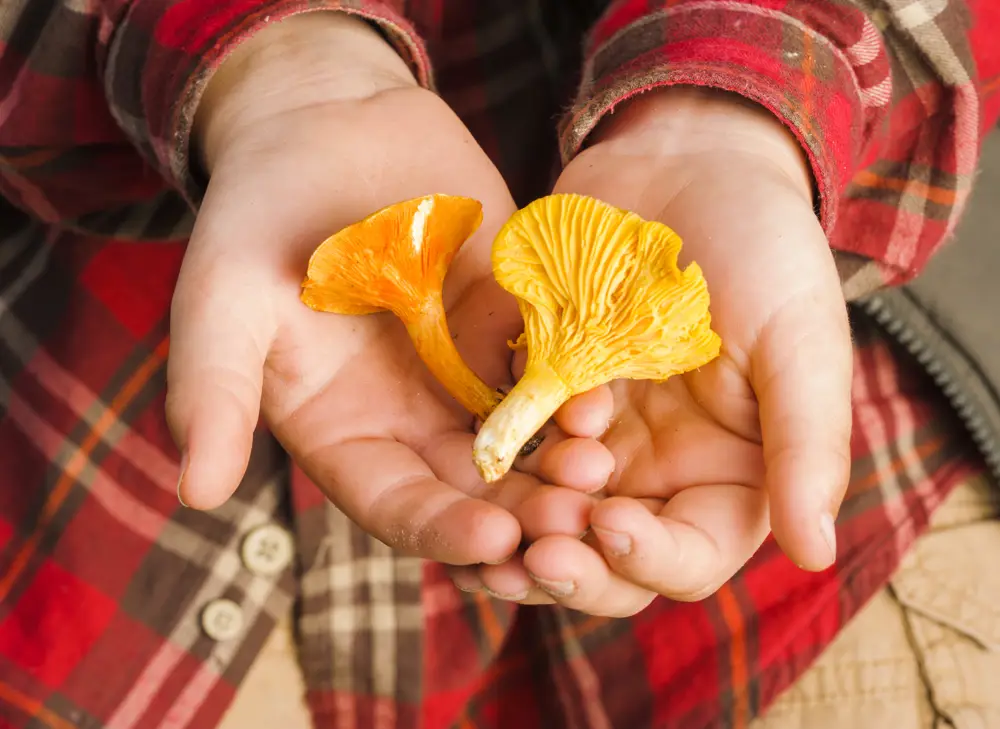Fungi foragers urged to pick only what they need
People planning to head out to forests this autumn to try their hand at ‘foraging’ – to pick wild mushrooms – are being urged to ‘be sure what you’re picking and pick only what you need’.
We're finding – increasingly – that inexperienced fungi foragers are clearing whole areas, damaging fragile ecosystems and potentially harming forest dwelling animals who depend on fungi as a valuable food source.
While foraging for mushrooms and other wild-growing ingredients is a fun and rewarding activity to do in Scotland's forests, there are some very important safety considerations to bear in mind when foraging for any wild foods, and mushrooms in particular.
Some species are dangerously poisonous and can even cause fatalities if eaten.
Speaking about foraging fungi, Colin Edwards, our environment manager, is asking people to make sure the information they are relying on for which species to pick, and which to avoid, is reliable and up to date. Organisations such as Wild Food UK provide good online guides but it’s important never to rely on just one source for mushroom identification, and never eat anything unless you are 100% sure it's edible.

False and true chanterelles can look very similar
One of the best – and safest - ways to find out about foraging is to ask an experienced forager. There are lots of courses, workshops, expeditions and outings based around foraging skills taking place throughout Scotland, especially during Foraging Fortnight in early September.
Some of the best advice online is found in the Scottish Wild Mushroom Code. Nature Scot have a page dedicated to our native fungi (not all of which are edible) while the website Scottish Fungi contains absolutely everything you need to know about the mushrooms found in your nearest woods and contacts for local groups.
Colin said fungi foragers should remember the Scottish Outdoor Access Code and ‘leave no trace’. He added
“I’d urge people to make absolutely sure they know what they’re picking – before they head out - and pick only what they’re going to use, being sure to leave some for others.”
“We have seen an increase in fungi pickers in some of our woodlands such as Devilla in the south of Scotland and some picking is indiscriminate and strips the entire wood bare.
“I often see families out with bags full of fungi, and hundreds of fungi turned and left broken on site because they’re not edible.
It’s important to leave enough for everyone - including the wildlife who call the forest home and who rely on fungi as a food source.

Finding a balance
The wellbeing of forest animals is important to all of us, so we need to leave enough for the local population while providing for ourselves.
Wild food is vital for the survival of the UK’s wildlife, so it is incredibly important to forage sustainably. Birds, hedgehogs and insects are just some of the species that rely on this finite source of protein. They help mushrooms and other plants to produce seeds and spores that grow into the next generation of tasty morsels. Like so many things in ecology and conservation, balance is absolutely key. If we all forage sustainably, the forests can produce more than enough for everyone to enjoy, human and animal alike.
Learn from the experts
If you're interested in foraging, consider going on a course and learning from an expert – you’ll find loads listed online:
- Know your mushroom! Do not touch or pick dangerous species and pick only what you can identify.
- Only take what you can use - leave plenty for wildlife and other foragers.
- Remember the Scottish Outdoor Access Code and ‘leave no trace’.